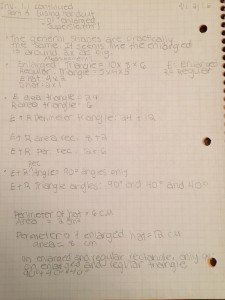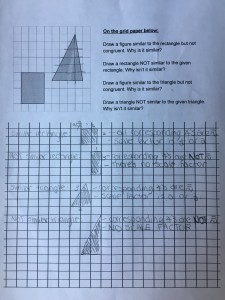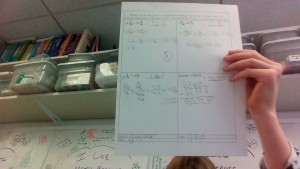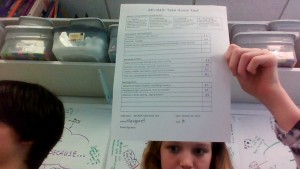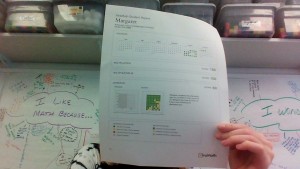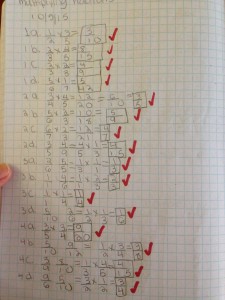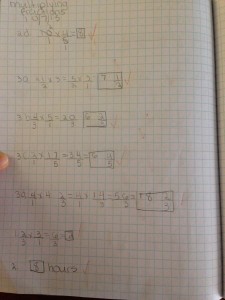In math we made math profiles about ourselves, and our relationships with math. I really liked the project because it helped me to think about how many different math experiences I have had. Here is my math profile:
I’ve always had a great relationship with math. When I was in pre-school, my parents would always read me books about math and counting. 365 Penguins, 10, 8 Apples on Top and a lot of others. To me, those books were always boring. I thought that if counting penguins was all math was, then I wanted no part of it. In first grade, when we learned math, it was usually counting which, as I said before, I was not the biggest fan of. Slowly, math got more and more interesting and not only about counting anymore. While the other kids were counting on their fingers to figure out the answer, I used my hatred of counting to my advantage, and I tried not to count on my fingers and it’s a good thing because the very next week the kids were told they couldn’t count on their fingers. Now, there was multiplication, division, addition, subtraction, fractions and so much more! Soon, I was excited to go to math. By middle school, math was my favorite subject. And I liked it so much I asked for “extra math homework”. I love math and can’t wait to learn more of it, and find more reasons why it’s the best thing ever.
One thing I love about learning math is that I love how there’s not just one way to do it. You can use different strategies to figure out the answer, but there is always one way to do it that’s quicker than the others. I also love the problems that aren’t as big, but there are a lot of them. For example, multiplication, division, etc. I like doing those kinds of problems because once you get the hang of it, you don’t even need to think about it, you can just do it. Not to say I don’t like big problems. I really like big problems. I like how different they are from the small ones. With the big problems, you don’t even know how much or which of the small problems you need to do to get the answer, and that’s what you’re trying to figure out. These require a lot of thought, which is what I like about them. I like everything about math, but you would be here all day if I wrote down every single thing I like about math.
As I said before, I like everything about math, which makes talking about my dislikes particularly hard. The reason why I don’t have any dislikes is because whenever I get frustrated with math, or go completely off track with a really big problem, it just adds on to the VERY long list of reasons why I do like math. I like how you can get frustrated easily because that makes it very hard to become a great mathematician, because you need to have a very strong will power. Whenever you look at a mathematician who is excellent at math, you can tell that they got past all of the frustrating things and pursued their passion for math.
I would say I’m a good math student. I love math, and I find that passion is very important when you’re doing anything. For one, I really love to participate. I love to share my ideas and talk in group discussions with the class. I find that it helps everyone to understand the concept we’re learning much better. Also, when we have work time, I feel that I work very efficiently and in an organized fashion. I think I’m a really good group worker, but something I want to improve on is giving other people more opportunities to share their ideas when I’m working in a group.
When I’m doing homework, I really like to try and get as much done as possible the first night it’s assigned. That way the next day, when I get more homework, it doesn’t start to pile on and get really stressful. I have a lot of afterschool activities going on, so right when I’m home and finished with those activities, the first thing I do is get my homework done. I love math and am so excited to learn more of it this year.

